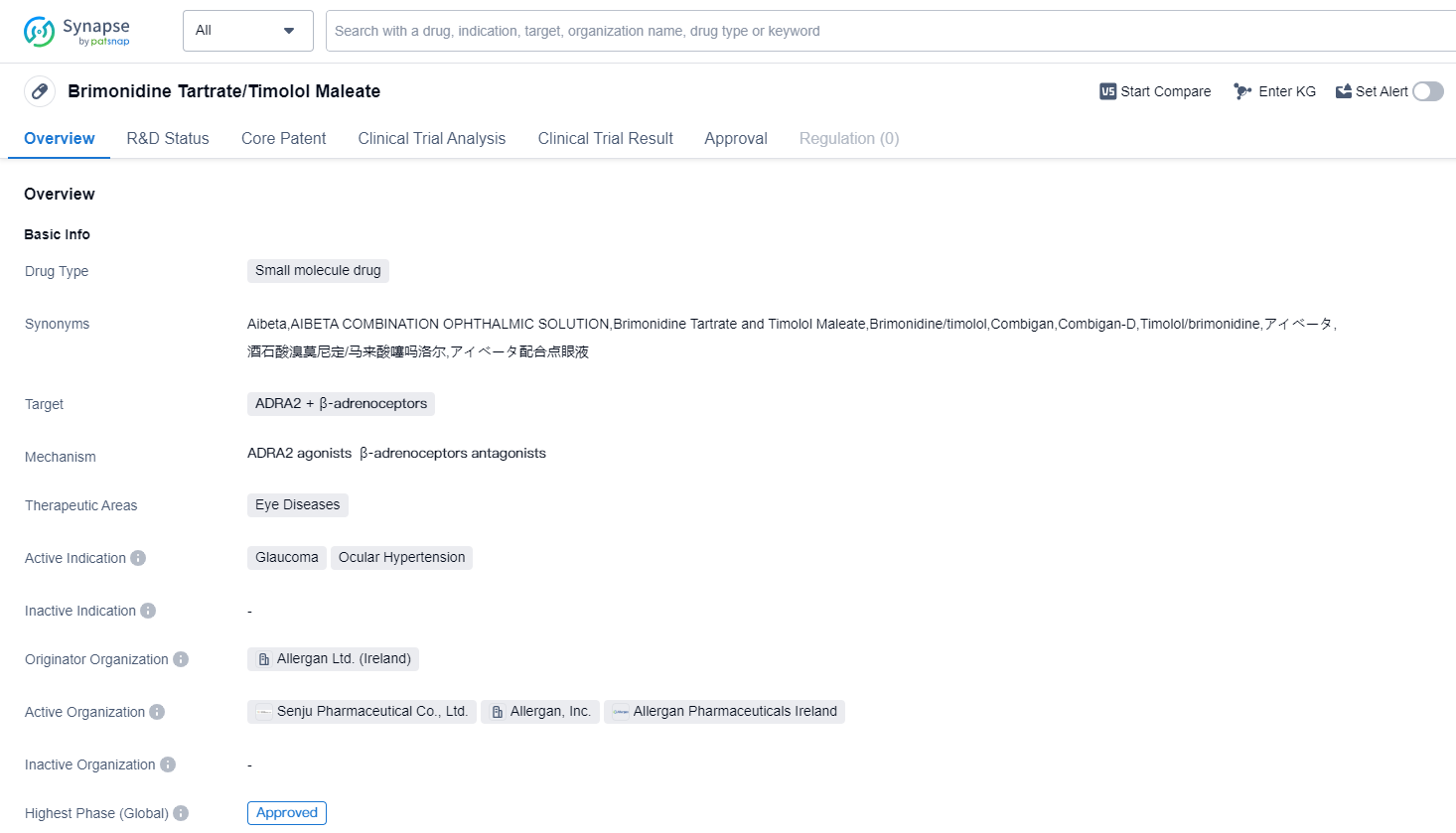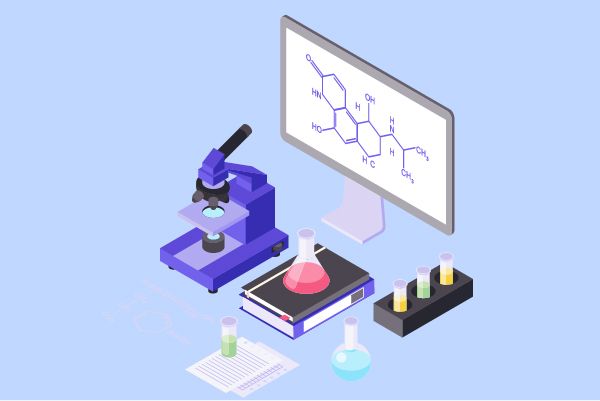A Comprehensive Review of brimonidine tartrate/timolol maleate's R&D Innovations and Drug Target Mechanism
Brimonidine tartrate/timolol maleate's R&D Progress
Brimonidine Tartrate/Timolol Maleate is a small molecule drug used in the treatment of eye diseases, specifically glaucoma and ocular hypertension. It targets both ADRA2 and β-adrenoceptors, which are involved in regulating intraocular pressure.
The drug has reached the highest phase of development which is approved globally. It is primarily used to reduce intraocular pressure in patients with glaucoma, a condition characterized by increased pressure within the eye that can lead to optic nerve damage and vision loss if left untreated. Ocular hypertension, which refers to higher than normal pressure in the eye, is also a targeted indication for this drug.
Brimonidine Tartrate/Timolol Maleate is developed by Allergan Ltd., an Irish pharmaceutical company. Allergan is the originator organization of this drug, indicating that they were the first to develop and market it. The drug is classified as a small molecule, which means it is composed of relatively low molecular weight and can easily penetrate cell membranes.
The approval of Brimonidine Tartrate/Timolol Maleate in both the United States and China suggests its efficacy and safety have been evaluated and confirmed by regulatory authorities in these countries. This drug has undergone rigorous testing and clinical trials to demonstrate its therapeutic benefits and minimal side effects.
👇Please click on the image below to directly access the latest data (R&D Status | Core Patent | Clinical Trial | Approval status in Global countries) of this drug.
Mechanism of Action for brimonidine tartrate/timolol maleate: ADRA2 agonists β-adrenoceptor antagonists
ADRA2 agonists and β-adrenoceptor antagonists are two types of drugs that have different effects on the body.
ADRA2 agonists are drugs that activate or stimulate the ADRA2 receptors in the body. ADRA2 receptors are a type of adrenergic receptor, which are involved in regulating the body's response to stress and the release of certain neurotransmitters. By activating the ADRA2 receptors, ADRA2 agonists can have various effects, such as reducing blood pressure, inhibiting the release of norepinephrine (a stress hormone), and promoting relaxation.
On the other hand, β-adrenoceptor antagonists, also known as beta-blockers, are drugs that block or inhibit the action of β-adrenoceptors. β-adrenoceptors are another type of adrenergic receptor that are involved in regulating heart rate, blood pressure, and the release of certain hormones. By blocking these receptors, β-adrenoceptor antagonists can have several effects, including reducing heart rate, decreasing blood pressure, and reducing the workload on the heart.
These two types of drugs have opposite effects on the body. ADRA2 agonists activate the ADRA2 receptors, while β-adrenoceptor antagonists block the β-adrenoceptors. They are often used for different medical conditions based on their specific effects. ADRA2 agonists may be used to treat conditions like hypertension (high blood pressure) or anxiety, while β-adrenoceptor antagonists are commonly prescribed for conditions such as hypertension, angina (chest pain), or arrhythmias (abnormal heart rhythms).
Drug Target R&D Trends for brimonidine tartrate/timolol maleate
ADRA2 and β-adrenoceptors play crucial roles in the human body. ADRA2 receptors are a subtype of alpha-adrenergic receptors, which are primarily found in the central and peripheral nervous systems. They regulate the release of norepinephrine, a neurotransmitter involved in various physiological processes. On the other hand, β-adrenoceptors are a subtype of beta-adrenergic receptors, found in various tissues including the heart, lungs, and smooth muscles. They mediate the effects of adrenaline and noradrenaline, regulating heart rate, bronchodilation, and smooth muscle relaxation. Understanding the functions of ADRA2 and β-adrenoceptors is essential for developing drugs targeting these receptors to treat various conditions like hypertension, asthma, and cardiovascular diseases.
According to Patsnap Synapse, as of 13 Sep 2023, there are a total of 11 ADRA2 + β-adrenoceptors drugs worldwide, from 13 organizations, covering 13 indications, and conducting 142 clinical trials.Conclusion:
Overall, the target ADRA2 + β-adrenoceptors shows a diverse competitive landscape with multiple companies, indications, and drug types. The future development of this target will depend on the progress of ongoing research and development activities by the companies mentioned and potential new entrants in the field.
👇Please click on the picture link below for free registration or log in directly if you have a freemium account, you can browse the latest research progress on drugs, indications, organizations, clinical trials, clinical results, and drug patents related to this target
Conclusion
In summary, Brimonidine Tartrate/Timolol Maleate is a small molecule drug developed by Allergan Ltd. for the treatment of glaucoma and ocular hypertension. It targets ADRA2 and β-adrenoceptors to reduce intraocular pressure. With approvals in both the United States and China, this drug has proven its efficacy and safety in treating these eye diseases.






